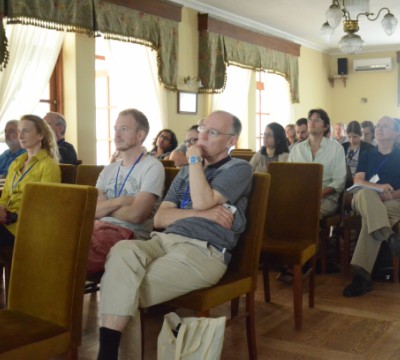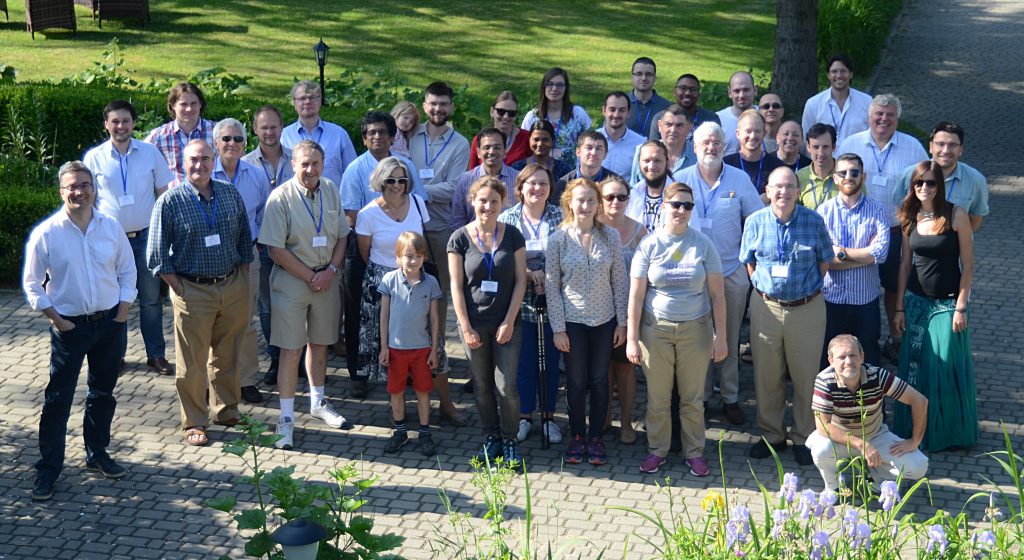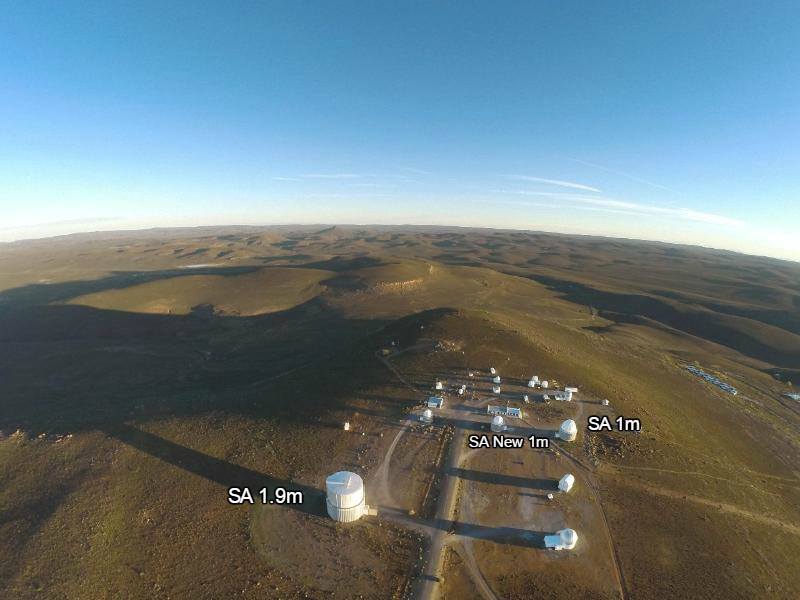
23 Aug SALT Conference 2017
SALT among the constellations of very large telescopes
Many of us recently gathered together in Kazimierz Dolny, Poland, to attend the workshop ‘SALT among the constellations of very large telescopes’. This meeting comes around 2 years after the first conference dedicated to SALT science results that was held in Stellenbosch, South Africa. Kazimierz Dolny is a picturesque and historic small town that overlooks the Vistula river which runs through a large part of Poland and the nearby capital Warsaw. The timing of the conference was excellent with warm European summer days, gentle breezes, and, of course, many fresh SALT science results to discuss.
More than 50 participants attended the 3 day workshop held in the Folwark Walencja hotel and its lovely garden surrounds. On the first day the focus was on SALT, its latest strengths and capabilities, as well as its relationship amongst many other telescopes. A particular source of pride was the recent successful commissioning of the mirror alignment system at SALT which has simultaneously delivered much improved image quality and greatly increased the available time for science observations.
There was a tangible excitement in the air after the many powerful advantages of SALT were discussed in the context of existing and future facilities. Michael Shara informed us of the critical importance of leveraging discovery spaces in astronomy if fundamentally new discoveries are to be made, by discussing the book ‘Cosmic Discovery’ by Martin Harwit. A clear consensus emerged that SALT is a highly capable rapid-response large telescope facility that is well-positioned in Sutherland to take advantage of future synergies with other Southern Hemisphere telescopes.
A key strength of SALT is the queue-scheduled operation, inherited from its Hobby-Eberly Telescope (HET) design, that enables a large suite of ‘always-on’ instruments to respond quickly to targets of opportunity. These targets may be triggered as part of normal user programs, director’s discretionary time or in the near future automatically by software monitoring transient notifications from telescopes such as Gaia, MASTER or LSST. As Patrick Woudt reminded us in his informative conference summary, SALT is well catered to all timescales in astronomy. The shortest timescales of milliseconds to minutes are covered by the numerous fast modes on SCAM and RSS. On longer timescales, SALT excels at amassing large spectroscopic atlases of targets spread across the sky and is ideal for long term monitoring that is very difficult, if not impossible, to do with other telescopes (e.g. supernovae and binary stars with orbits of several months to years). SALT is locally strengthened by an armada of small telescopes and the essentially co-located Meerkat radio telescope, a precursor to the mid-frequency Square Kilometer Array. All of these strengths help clarify and inform the science requirements for possible 2nd generation instrumentation for SALT.
Image above: aerial view of the Observatory plateau in Sutherland, South Africa.
It was pleasing to see the SALT community maturing at this conference. The group of mostly young researchers helped facilitate a supportive and open workshop atmosphere. Everyone wanted to help everyone else squeeze the most they could out of SALT for their science. It was a real pleasure for those members of SALT operations present to see the latest SALT results directly from the users and to put faces to names we see in the queue. Also very encouraging was to see the keen interest expressed in using SALT by those yet to do so.
For many attendees it was their first time visiting Poland. Many understandably struggled with the pronunciation of Polish names, but I would encourage those who have yet to learn some Polish to give it a go! Polish is a mostly phonetic language and once you have covered some basics the names become much easier to say. Hopefully by the time of the next SALT conference all the session chairs will be well practiced in Polish name pronunciation.
As an Australian with a Polish background, it’s always a treat for me to visit Poland and sample Polish cuisine. Here are a few Polish specialties that you may have tried or noticed during the conference to finish up this report:
-Ógórki – Polish pickled cucumbers were available during one of the Lunches.
-Sernik – Polish cheese cake, often with the other yummy cakes provided during the breaks.
-Szarlotka – Polish apple pie/cake. Also during conference breaks and the conference dinner.
-Naleśniki z serem – Polish pancakes filled with cheese. Seen during some breakfasts.
-Lody – Polish for Ice Cream. Perhaps the most numerous type of shop in all of Poland!
Acknowledgements: On behalf of all the participants I would like to again express our deep gratitude to Joanna, Kasia, Cezary, Krystian and Stefania for all their hard work in organising the workshop. A big thank you also to Patrick Woudt for providing a copy of his conference summary and to Lisa Crause for conference photos.




